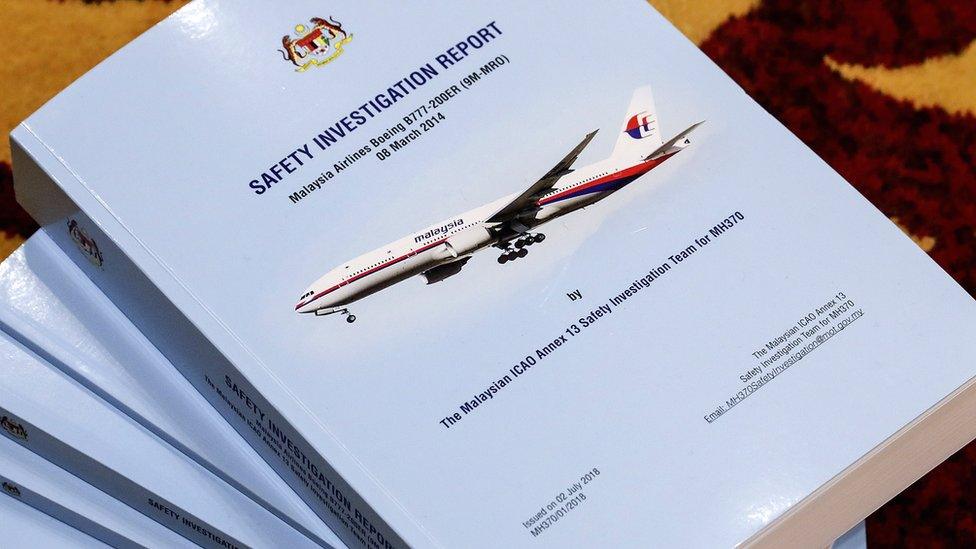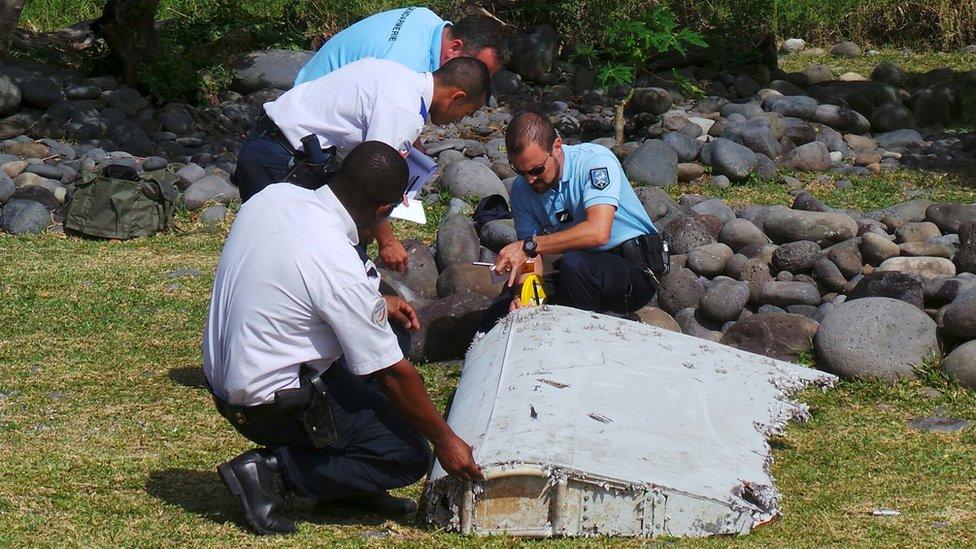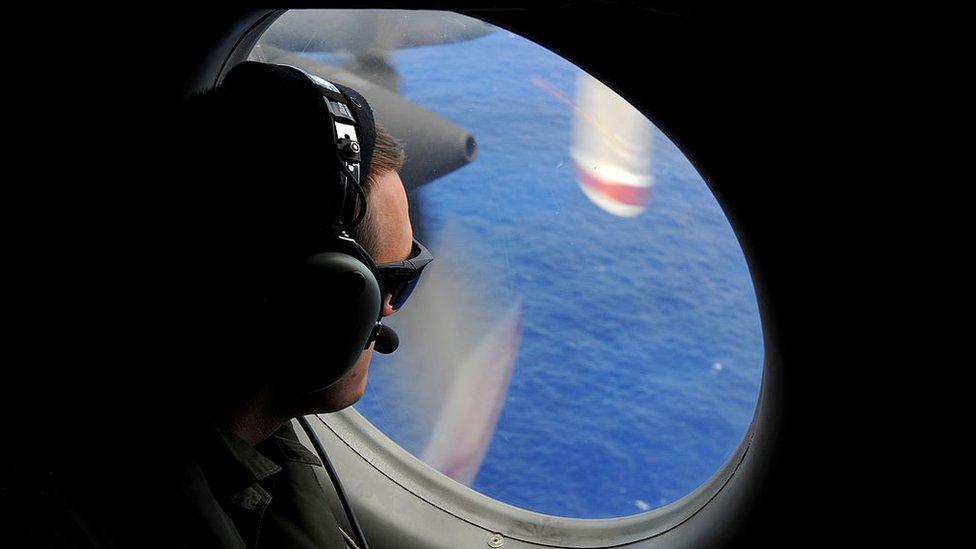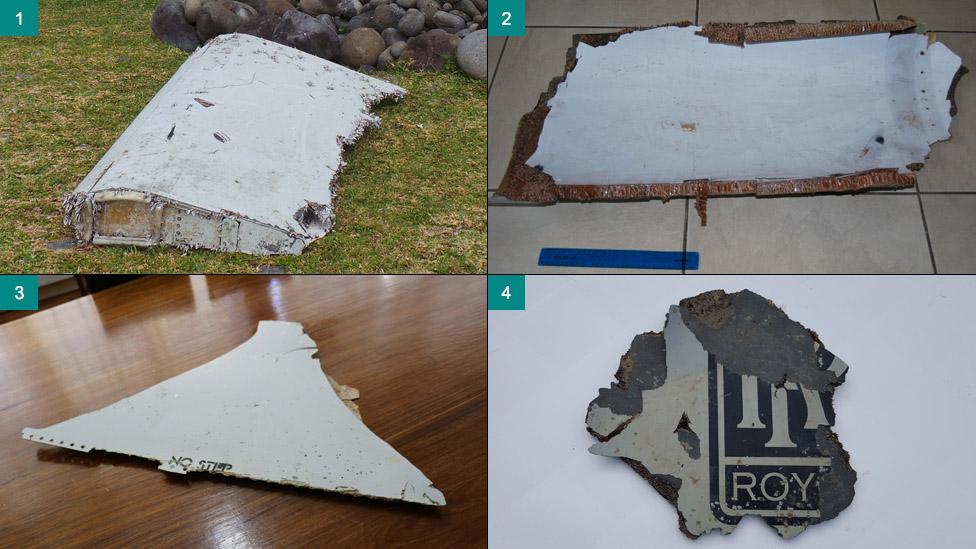Missing Malaysia flight MH370: Aviation chief quits over failings
- Published

Relatives of missing MH370 passengers consoled one another as the official report was released
Malaysia's civil aviation chief has quit after a report into the missing Malaysia Airlines flight MH370 found failures by air traffic control.
Azharuddin Abdul Rahman said the official report, released on Monday, highlighted lapses by controllers in relation to emergency procedures.
The passenger jet had been missing, the report said, for about 20 minutes before authorities sent an alert.
The aircraft mysteriously disappeared in 2014 with 239 people on board.
It was flying to Beijing from Kuala Lumpur and is believed to have plunged into the southern Indian Ocean.
An official search ended in May, although Malaysia's new government has said it might resume the search if more credible evidence emerges.

Azharuddin Abdul Rahman said he was resigning as civil aviation chief "with regret"
Responding to the report's findings on Tuesday, Mr Rahman said in a statement that it was "with regret and after much thought and contemplation" that he was resigning as chairman of the civil aviation authority of Malaysia.
What did the report say?
The long-awaited official report into the disappearance of flight MH370, external offered no new information on why the passenger aircraft vanished four years ago.
It said that while there was evidence of "unlawful interference by a third party", meaning that the plane may have been manipulated off course, it was unclear who may have been responsible.

The official report into missing flight MH370 says the plane may have been "manipulated" off course
As well as finding failures with air traffic controllers to initiate standard emergency phases "in a timely manner", the report also said:
The plane was unlikely to have been deliberately brought down by either of the pilots
There is no evidence that the pilots' performance was under question nor any suspicion relating to their background
There is no evidence to suggest that the plane had been taken over remotely
While mechanical failure cannot be ruled out, evidence suggests the aircraft was airworthy
Recovered debris "suggests the aircraft had broken up", but it is not clear if this happened in flight or during impact
No irregularities were found in the aircraft flight plan
Australian investigators have also previously rejected claims that the flight was deliberately brought down by the pilot.
Relatives of the missing passengers expressed disappointment on Monday that no conclusive explanation for the disappearance of their loved ones had yet been offered.
What do we know about the disappearance?
Flight MH370 disappeared after it stopped sending communications hours into its flight on 8 March 2014. No distress signal or message was sent.
The subsequent hunt formed one of the largest surface and underwater searches in aviation history.
The search for the plane eventually focused on a 120,000 sq km area of seabed about 2,000km off the coast of Perth in the southern Indian Ocean.
Although the underwater search turned up nothing, small pieces of debris from the plane were washed up on islands in the Indian Ocean and on the African coast.
Although Malaysian and Australian authorities have so far failed to find the aircraft, both have said the search could resume.
A private US firm began another search for the plane earlier this year but has yet to turn up any clues.
Flight MH370: Audio recording reveals final cockpit communications
- Published22 May 2018

- Published3 October 2017

- Published23 January 2017
